Best bird book of the year! I get sent a lot of books in hopes that I'll write them up in the blog or in one of the publications that accepts my articles. I've slowed down on some of it. I'm interested in certain bird books--definitely not all. For example, I do not want to ready My Aviary of Hope about some woman who goes out to find herself but finds her wings instead (really, publishers, when I say "no thank you" sending me a galley copy, a pre sale copy and a final copy will not get me to read it). That's not my kind of book--not that there's anything wrong with that, that's just not what I want to read.
I usually want the books that publishers don't know how to market. As a matter of fact, the publicist sent the list that included this book with a note that read, "Yeah, these are weird titles but on the off chance any of you want them, here they are." One of the titles practically made me salivate. And last week, Non Birding Bill found it in our PO Box and sent me the photo:
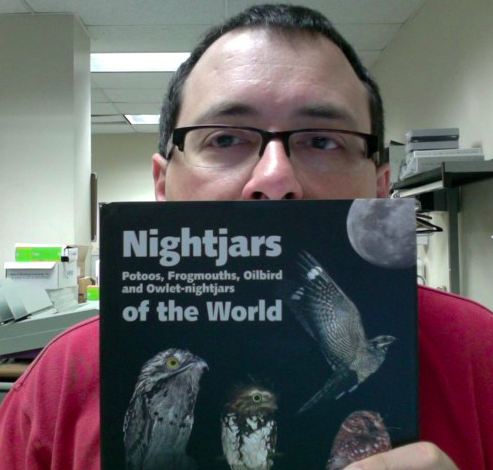
Princeton University Press has made the best bird book I've seen all year with Nightjars, Potoos, Frogmouths, Oilbird and Owlet-nightjars of the World...or more succinctly: Nightjars of the World by Nigel Cleere. It is an AWESOME book. Now, before some of you glance at that cover and say, "Ah, Shaz is geeking out over a brown bird book, time to go to the next blog," let me hit you with some of the pages of this cool tome.
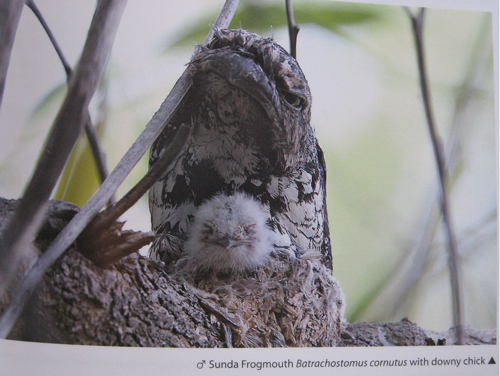
Though brown, many of these birds look like Muppets. Look at the above Sunda frogmouth (and it's little fluffy chick) from the book. Don't you half expect it to break into Manah Manah at any moment? For those who may not be familiar with this group of birds, it includes common nighthawks, whip-poor-wills or the great potoo that I saw in Panama this past February. Birds that for the most part have highly cryptic plumage and look like broken branches in trees or blend seamlessly into leaf litter on the floor.
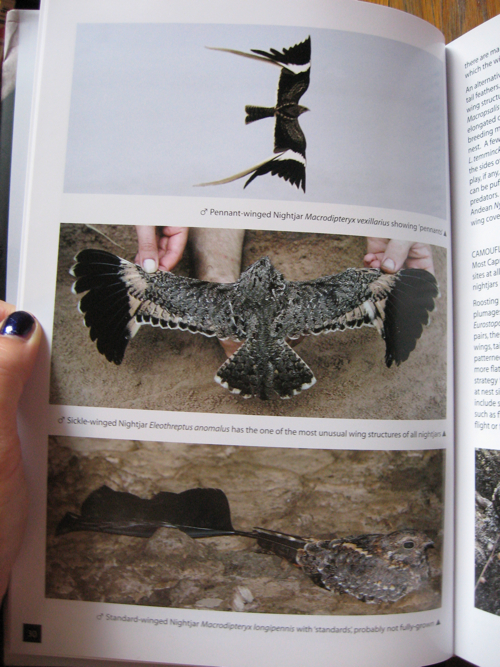
This book is a comprehensive photographic guide (check out the crazy variations these birds come in), but also gives information about this poorly understood group of birds in an easy to read fashion. You find yourself with questions that you didn't know you had like, "Why would a species that is nocturnal need to have bizarro wing and feather patterns to display for mating? How the heck do the females see any of that at night?"
But you're also left with some interesting factoids like:
The common poorwill is the only bird to hibernate in parts of its range.
Oilbirds got their name because people used to boil down the chicks and use the oil for cooking or for lamps.
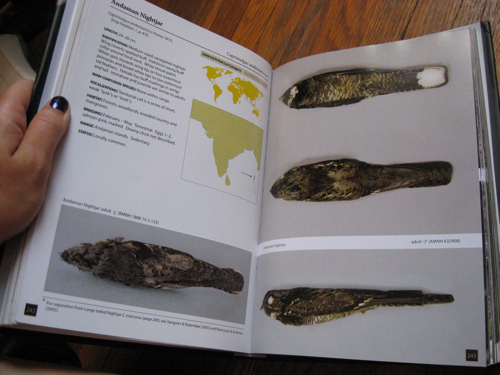
The book also strikes a chord as you realize that for some species--there are no photos of the bird in the wild, only study skins in museums. You'll also be struck by how much we don't know about the birds and how often you'll see the word "presumably" describing nesting or mating behavior.
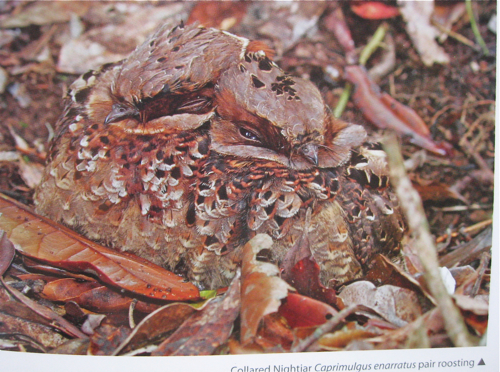
I love everything about this book and this is a trend in books that I first saw with The Shorebird Guide a few years ago and I'm happy to see it continue. We have so many photographers out there as a huge resource so you get to see the birds in different angles and the author is wise enough to write the book in an approachable way, not like a boring lecturer at a stuffy university. This book will appeal to hardcore and intermediate birders alike because this is a fascinating family of birds to study and the photos are incredible--note the snuggling collared nightjars above. Many of us will not get a chance to see most of these birds in the wild and if we do, most likely the bird will be flying away as we just flushed it. For others, this book will be an inspiration to create studies and graduate projects when you realize how much is undocumented for certain species. It's a sort of undiscovered country bird-wise. And yet for many of us, it will inspire us to save money for trips to have a chance to travel to foreign places to have a chance to see this secretive group of birds.
I would even consider giving this book to kids about 9 and up who have a strong interest in birds. There are plenty of photos and again, it's in a fairly easy to read format and the text isn't presented in an overwhelming pile of pages between photos. I would have LOVED this book when I was into birds as a kid.
Thank you, Nigel, for coming out with a great bird book.
